
Text — Marie Charles Pelletier
Photos — Alexandra Côté-Durrer
In partnership with Sépaq

After a rather sedentary spring, Quebecers were longing for nature — perhaps none more so than Montrealers, who had quickly exhausted their 12-square-foot balconies and Mount Royal’s most secret slopes. What better way to recharge yourself than enjoying the green of Québec’s provincial parks? Happily, three of them are just a stone’s throw away from the city.
BESIDE sent team members and friends — more city slickers than outdoor pros — on a one-day one-night discovery adventure.

Stand-up paddleboarding and riding with the wind in your hair at Parc national des Îles-de-Boucherville.
__________
We left the streets of Montréal early in the morning, the asphalt already warming under the sun. It’s not quite 8:00 a.m. and already the heat is almost unbearable. We take the tunnel to Île Sainte-Marguerite in Parc national des Îles-de-Boucherville. The air here is a little less oppressive thanks to a fresh breeze off the water. The city is far behind us.
We meet up with Laurie on the shore. Today, she’s trying out an SUP (stand-up paddleboard) for the first time — and trying to overcome her fear of water. “I’ve tried everything,” she laughs, “but I just don’t float.” Yet she doesn’t hesitate for even a second to hop on the board and pull herself upright.
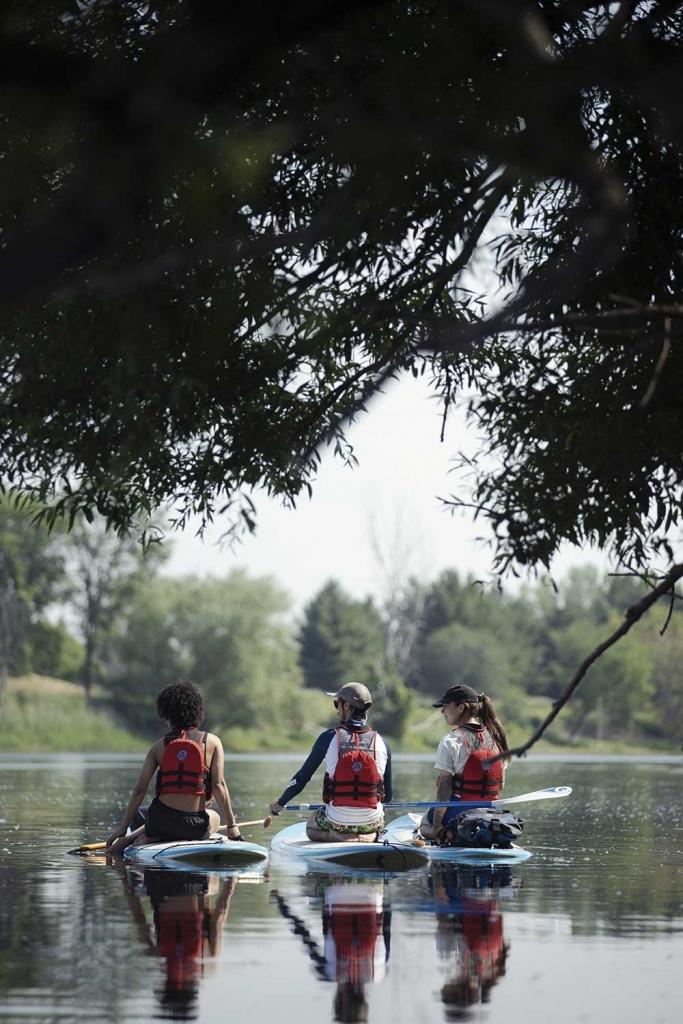
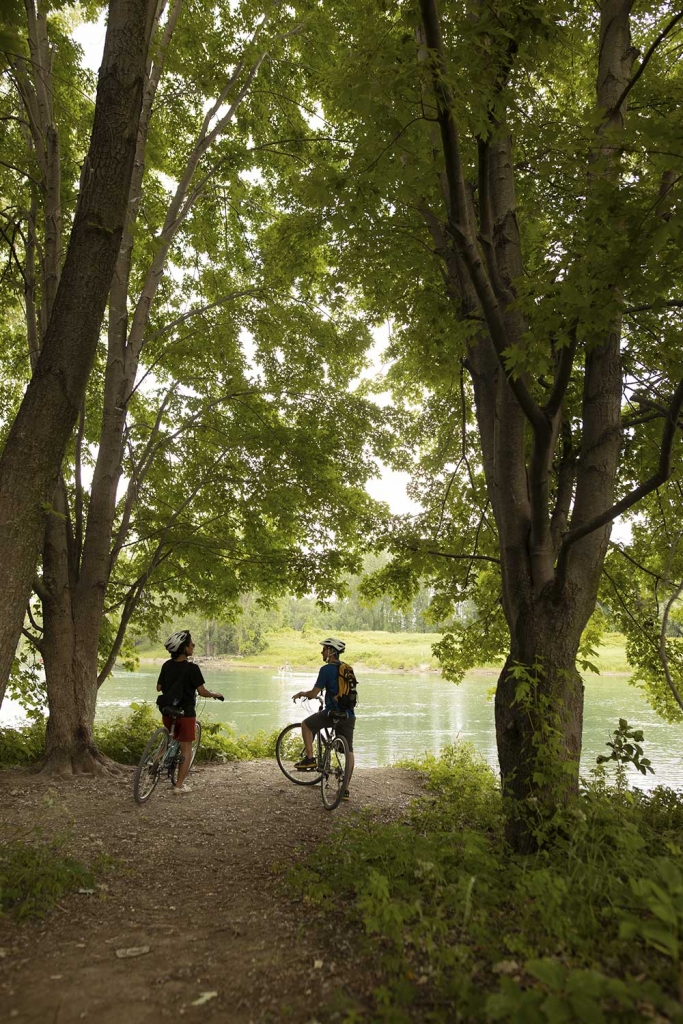
Once you’ve got your balance, there’s something very soothing about gently pulling yourself through the water, your paddle cleaving the reflections of the sun. Laurie’s fear of falling into the water quickly gives way to laughter.
To dry your hair after, all you have to do is bike through the islands, meander along the river, observe the wildlife, and picnic in the shade of a weeping willow. With these great big trees and large meadows of tall grasses, it’s hard to believe you’re this close to the city.
In addition to paddleboarding and biking, Parc national des Îles-de-Boucherville is the perfect place to fish, sea kayak, canoe, play beach volleyball, and sneak in some amazing wildlife watching. You can also camp or glamp (there’s a ready-to-camp option) on Île Grosbois. If you forget your camp stove or tent fly, you’re close enough to pop back to Montréal, even if it would be a nuisance.
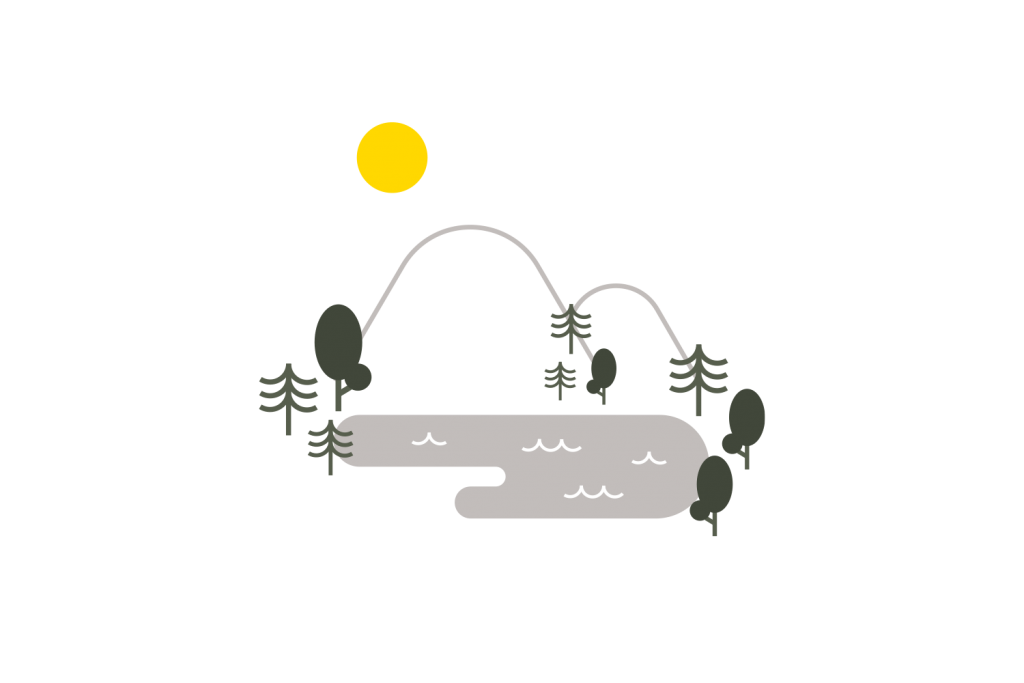
Canoeing and a rush of chlorophyll in Parc national du Mont-Saint-Bruno
__________
After stopping in Saint-Bruno-de-Montarville for an iced coffee, we drive just five more kilometres before arriving at the entrance to the park. We immediately envy the people of Saint-Bruno for their beautiful backyard.
Our colleague Olivier and his girlfriend, Maude, soon arrive with their two-year old, Louise. The young family walks through the deciduous forest on a long trail leading to Lac Bouleaux, one of the five lakes in the park. The green of the trees takes hold of us, a real rush of chlorophyll. Perched on branches, birds discreetly observe passersby.
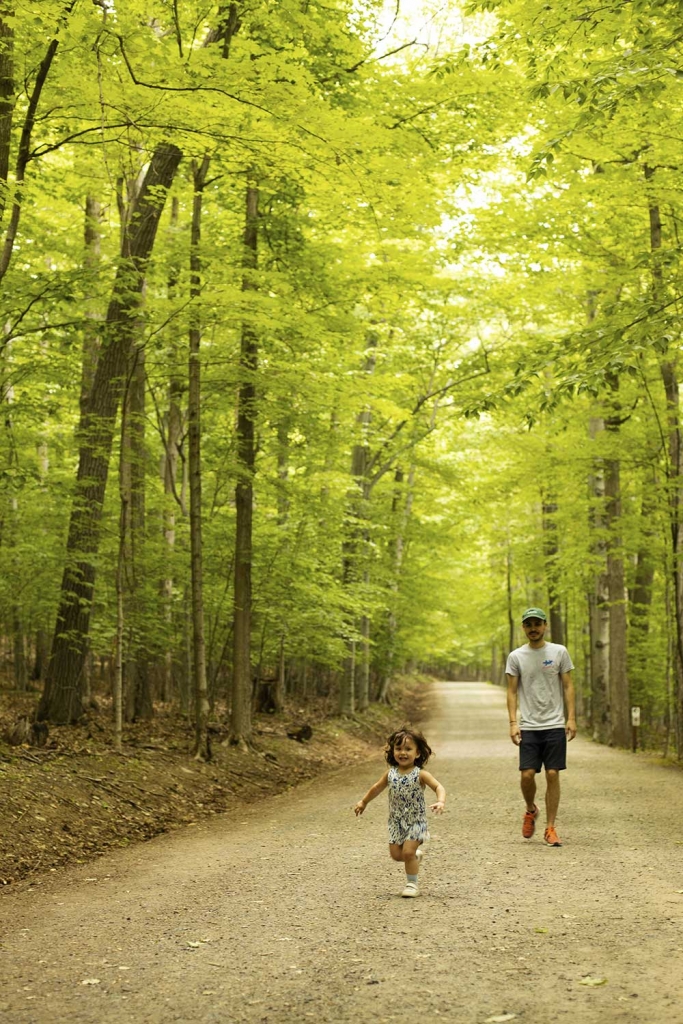
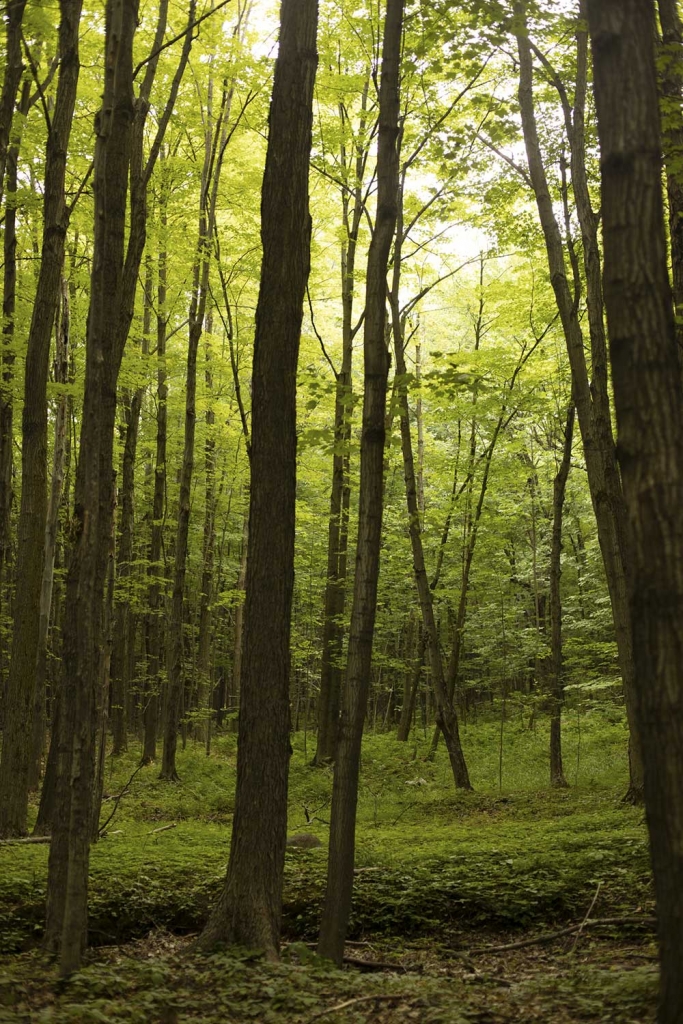
When we arrive, it quickly becomes apparent that Louise is not a fan of life jackets. But as soon as her parents put the canoe into the water, her eyes open wide. In this small, high-up lake surrounded by trees, sounds are smothered, inaudible. You feel protected and far away from it all.
You don’t have to be an expert to enjoy canoeing, as the Mercier-Chan-Thibodeaus can attest. Best of all, you can spot aquatic animals while paddling along the shores. When the sun comes out, set down your oar and lean back for a few moments to enjoy the rays before heading back to the dock.

In addition to canoeing and birdwatching, Parc national du Mont-Saint-Bruno is also a great place for apple picking, hiking, and trail running.

Campfire coffee and morning kayaking in the Parc national d’Oka
__________
In the Parc national d’Oka, the pines are huge and surround you as soon as you enter. As evening falls, the air fills with the smell of cracking fires and foil parcels on the grill.
We sit around a picnic table eating burgers topped with Oka cheese (how meta!). Two yellow beads observe us from the edge of the woods surrounding our site: a white-tailed deer, respecting physical distancing measures, has come to wish us a good evening.
The park’s campground welcomes both trailers and tents, but we opted for the comfort of a ready-to-camp.
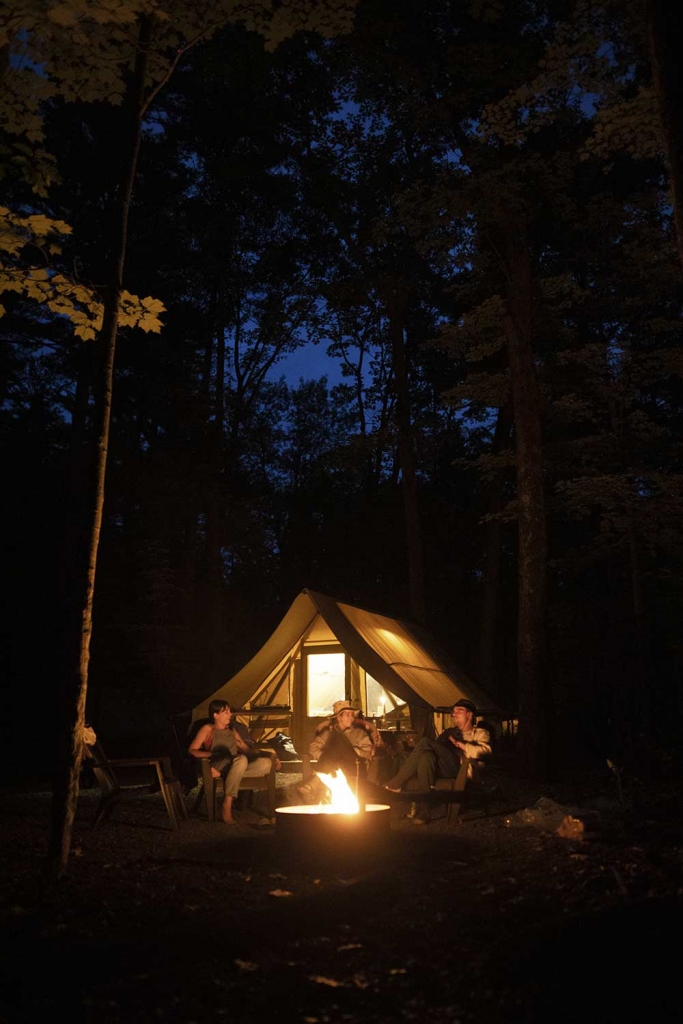
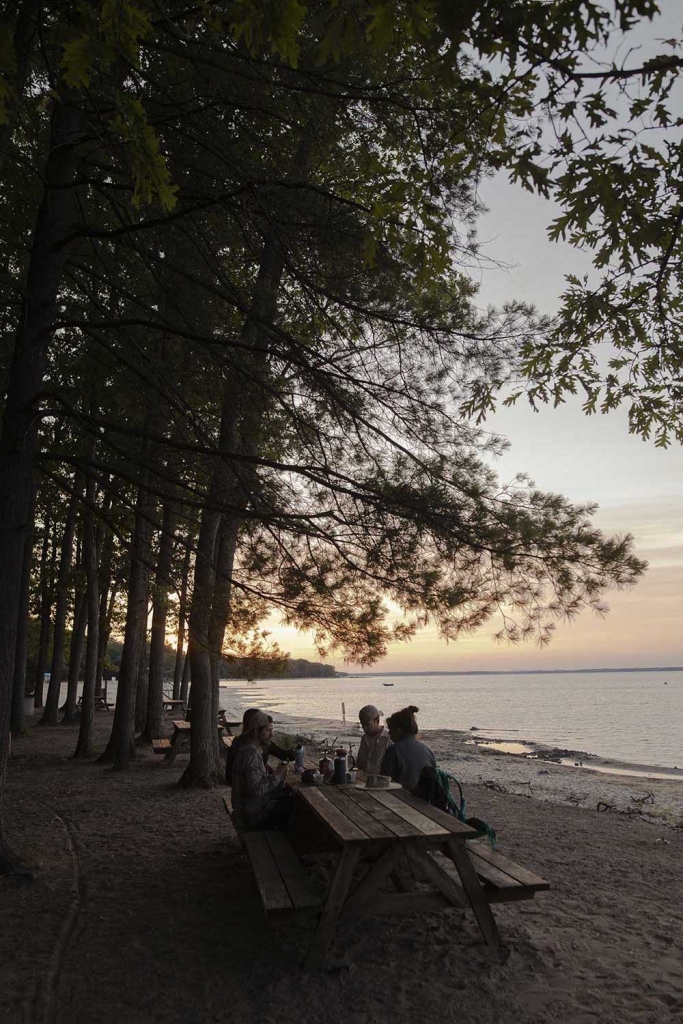
After a soothingly quiet night, we get up at dawn. The coffee is gently brewing as the sun rises. After breakfast, we head to the beach at Lac des Deux Montagnes. The water is calm, and a few people have already set up on the sand with their books. The white canvasses of sailboats swell in the distance. After consulting with our fellow campers, we agree that kayaking will be our activity for the morning. You can rent boats right on the beach. Barefoot, we slide the kayak into the still-quiet waters. In the distance, we can make out the west edge of the island of Montréal, Île-Perrot, and Vaudreuil-Dorion. We paddle for hours and explore the surrounding towns from the shore.
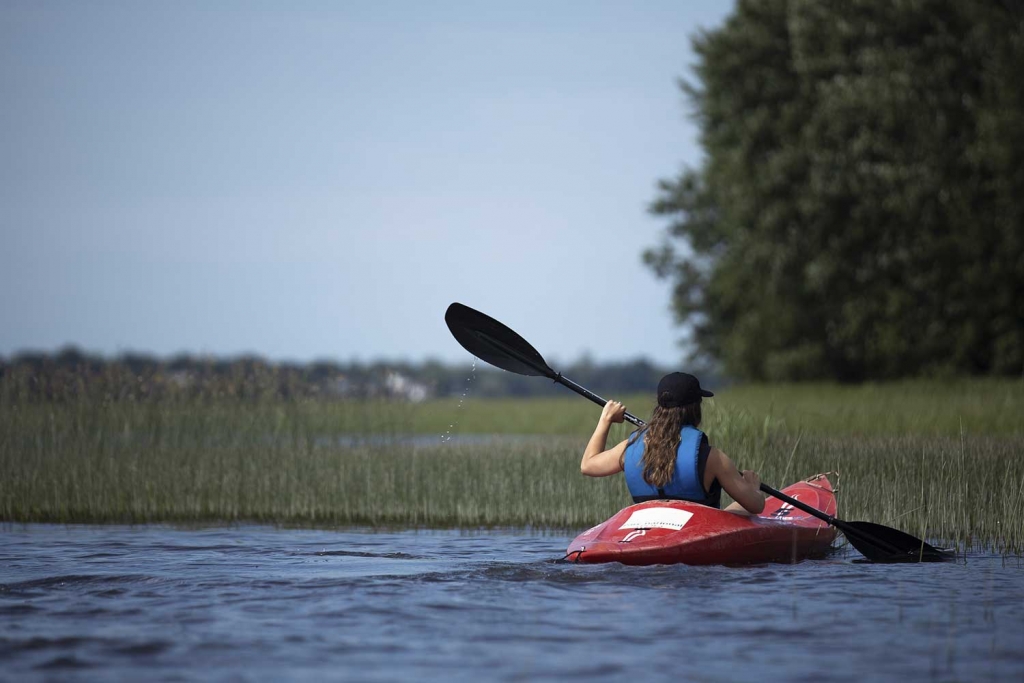
In addition to camping and kayaking, Parc national d’Oka offers swimming, biking, canoeing, stand-up paddleboarding, pedal boats, wildlife watching, sailing, and activities for children.
***
Who says you need to go far for a change of scenery? The concentration of unique landscapes and outdoor activities in these three parks — all a hop, skip, and a jump away from Montréal — has left us already wanting to go back, and often.
__________
Given the summer season and deconfinement, Sépaq is encouraging visitors to book their entry and pay their fee online and to read up on what activities are available. Also, even though our team visited all 3 parks in one day, we strongly recommend dedicating a full day to each one.
__________
Sépaq (Société des Établissements de Plein Air du Québec) boasts 23 provincial parks and one marine park, totalling 7,017 km2 of protected area. They strike a balance between protecting the land and offering low-impact activities like hiking, canoeing, camping, and kayaking. Sépaq asks visitors to behave respectfully in order to preserve our majestic natural heritage, so that future generations can enjoy it too.
Never Miss Another Issue
Two issues per year
25% OFF previous issues
Free Shipping in Canada